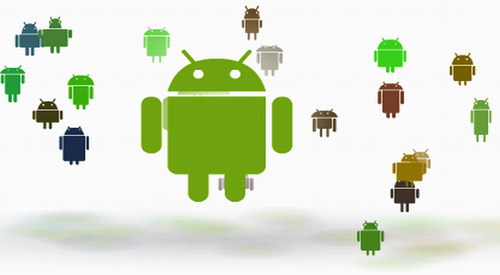Monday, December 3, 2012
Android's versions history (Part 1)
Android OS has gone through five years of development way, a series version brings many improvements released. Here are the key features in the Android version since its launch.
On each day have about 1.3 million Android devices activated. A truly impressive figures showed strong growth of this operating system - Photo: Internet
Android 1.0
Release date: 23-11-2008.
HTC Dream is the first Android business smartphone user with physical sliding keyboard design. Google Android 1.0 version has not been fixed code name, even before the name Astro Boy or Bender is assigned to the first generation.
Android 1.0 very primitive, built-in ability to sync with Google's online services such as Gmail, Google Calendar and Contacts, a media player, Wi-Fi and Bluetooth support, the status bar displays notification application and an application to take pictures (camera) but is not allowed to change the resolution and image quality.
Android 1.1
Launch: dated 9-2-2009.
Besides figure, flaming Google Rich put the system name (code) on the Android version. Although not formally adopted but Android 1.1 has named Petit Four. Does not include many features, this version added some new features for Google Maps to show more detail, calling the virtual keyboard can be displayed or hidden when calling, SMS allows users to store programs attachment. Android 1.1 fix some bug in Android 1.0.
Android 1.5: Cupcake
Launch: dated 30-4-2009.
Cupcake, codenamed first application for the Android version. Cupcake brings many new features such as virtual keyboard the ability to predict the word you are typing, dictionary of terms set by the user, support widget on the home interface, camera and video playback, the time history call, auto screen rotation in the direction of use (screen rotation). Web browser in Cupcake have added the ability to copy / paste.
In addition, this version allows users to display images in the book, an interesting point that most mobile phone users want to have. Screen transition and startup image is refreshed.
Android 1.6: Donut
Launch: dated 30-9-2009.
Donut overcome the "loose" Cupcake, expanding the voice search function and character to your bookmarks and contacts. Android Market become the "markets" for users to search and view the Android applications. Photography and video applications in Donut faster. Operating system support larger screen resolution, directed to the generation of large-screen smartphone.
Android 2.0: Eclair
Release date: 26-10-2009.
Only after nearly a month of launch Donut (Android 1.6), Google launched Eclair, version was found to be "big step" of this operating system.
Eclair improved a lot, from the interface to the application within the system. Capture application enhanced zoom functions (zoom in), white balance, flash support and other color effects.
The operating system more stable, improved handling, better Bluetooth support, especially multiple accounts sync options. A convenient point is appreciated at the time contacts interface allows click on an image to your contacts to call, SMS or email them. Calendar application interface (Calendar) also changes.
Eclair is the first Android version supports background image (live wallpaper), even if this option consumes a lot of battery.
Android 2.2: Froyo
Launch: dated 20-5-2010.
From version 2.0 onwards, Android gradually improved. Version 2.2 (Froyo) with Adobe Flash to Android, accompanied by a series of Flash-based games and applications. Users can also view a video clip in Flash, such as YouTube and "ordered" to make calls via Bluetooth.
A new feature in Froyo favorite mobile group users is USB Tethering and Wi-Fi Hotspot, making Android smartphone devices Wi-Fi hotspot from a 3G connection. This feature is used very popular to this day.
First Android allows installation application (app) on the SD card instead of the default install right into the device's memory. A "first" again in Froyo include the support number and password digits. First branded Froyo devices hit the market is the HTC Nexus One.
Read more Android's versions history (Part 2)
Subscribe to:
Post Comments (Atom)
















No comments:
Post a Comment
Interesting? Please leave a comment here: